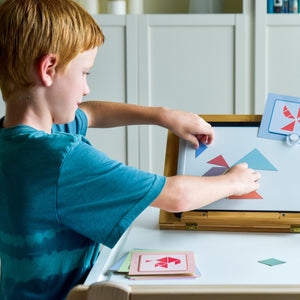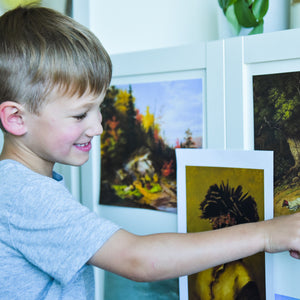Creating a Spiritual Learning Environment

The single most important contributor to the success of our children’s education is the Holy Ghost. For this reason, Elder Richard G. Scott said, “If you accomplish nothing else in your relationship with your students than to help them recognize and follow the promptings of the Spirit, you will bless their lives immeasurably and eternally.”1
Elder Scott highlights two essential life skills: first, the ability to recognize the Spirit’s promptings, and second, the willingness to follow them. When our children can hear and obey the Holy Ghost, then they are in a prime position for Him to teach them and guide them along their journey to greater intelligence. Moreover, He can help them make spiritual connections with temporal matters and transform learning into wisdom.
We parents can help our children develop these skills by creating an environment where the Spirit can be present and influence them. Here are just a couple of the many wonderful ways to create such an environment:

1. Set aside some devotional time each day.
Sister Michelle D. Craig, first counselor in the Young Women General Presidency, advised, “Pick a time and place, and listen for God’s voice every day. And keep this sacred appointment with exactness, for so very much depends on it!”2 We can invite our children to follow Sister Craig’s counsel and to incorporate personal prayer and scripture study into their daily routines. Those practices are a sure way to strengthen the Spirit’s presence in our children’s lives, giving them regular opportunities to hear God’s voice through the promptings of the Spirit and act on those promptings.
Prayers do not have to be long or fancy, just earnest, so no matter the age or ability of our children, they can communicate with their Heavenly Father and develop a personal relationship with Him. For scripture study, nonreaders can watch videos of scripture stories, while early readers can read them and highlight portions they like. More advanced readers can spend time in the scriptures themselves and annotate in the margins or in a journal. Readers and nonreaders alike can memorize scriptures through songs, like those created for the Articles of Faith, or some other effective memorization method, such as Charlotte Mason’s Scripture Memory System.

2. Make gospel connections.
Everything our children learn can be tied into the gospel in some way. Just like Jesus created spiritual analogies from sheep herding, fishing, mustard seeds, and fig trees, we can help our children draw gospel connections from everyday subjects too. When they learn to look for such connections, including relationships and divine patterns, the Spirit will show them “God moving in his majesty and power.”3
As we establish an environment where our children can invite the Spirit to influence their lives through prayer, scripture study, and gospel connections, they will gradually develop the two most essential skills needed in this life: the ability to recognize the Spirit and follow His promptings. As they do, we will watch our children’s knowledge and understanding increase, for the Holy Spirit will “enhance [their] natural senses so that [they] can see more clearly, hear more keenly, and remember what they should remember.”4

_________________________________________
1Richard G. Scott, “To Learn and to Teach More Effectively,” Brigham Young University Education Week devotional, Aug. 21, 2007, 5, https://speeches.byu.edu/talks/richard-g-scott/to-learn-and-to-teach-more-effectively/
2Michelle D. Craig, “Spiritual Capacity,” Liahona, November 2019, 19, https://www.churchofjesuschrist.org/study/ensign/2019/11/15craig?lang=eng
3Doctrine and Covenants 88:47.
4James E. Faust, “The Gift of the Holy Ghost—A Sure Compass,” Ensign, May 1989, 33.
- The Mindful Heart







